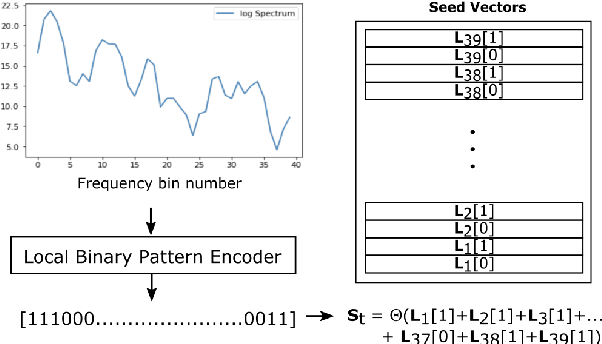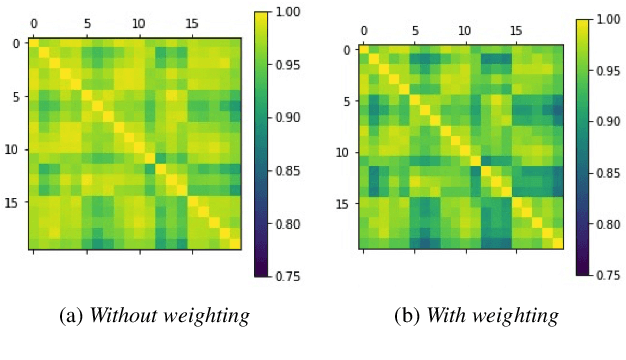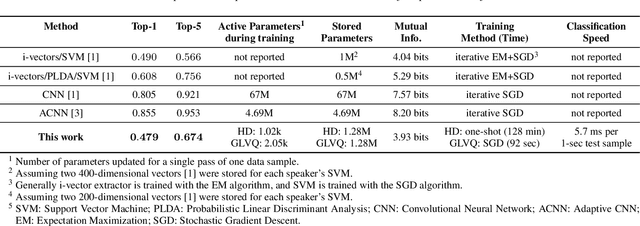Computing with Hypervectors for Efficient Speaker Identification
Paper and Code
Aug 28, 2022



We introduce a method to identify speakers by computing with high-dimensional random vectors. Its strengths are simplicity and speed. With only 1.02k active parameters and a 128-minute pass through the training data we achieve Top-1 and Top-5 scores of 31% and 52% on the VoxCeleb1 dataset of 1,251 speakers. This is in contrast to CNN models requiring several million parameters and orders of magnitude higher computational complexity for only a 2$\times$ gain in discriminative power as measured in mutual information. An additional 92 seconds of training with Generalized Learning Vector Quantization (GLVQ) raises the scores to 48% and 67%. A trained classifier classifies 1 second of speech in 5.7 ms. All processing was done on standard CPU-based machines.
 Add to Chrome
Add to Chrome Add to Firefox
Add to Firefox Add to Edge
Add to Edge